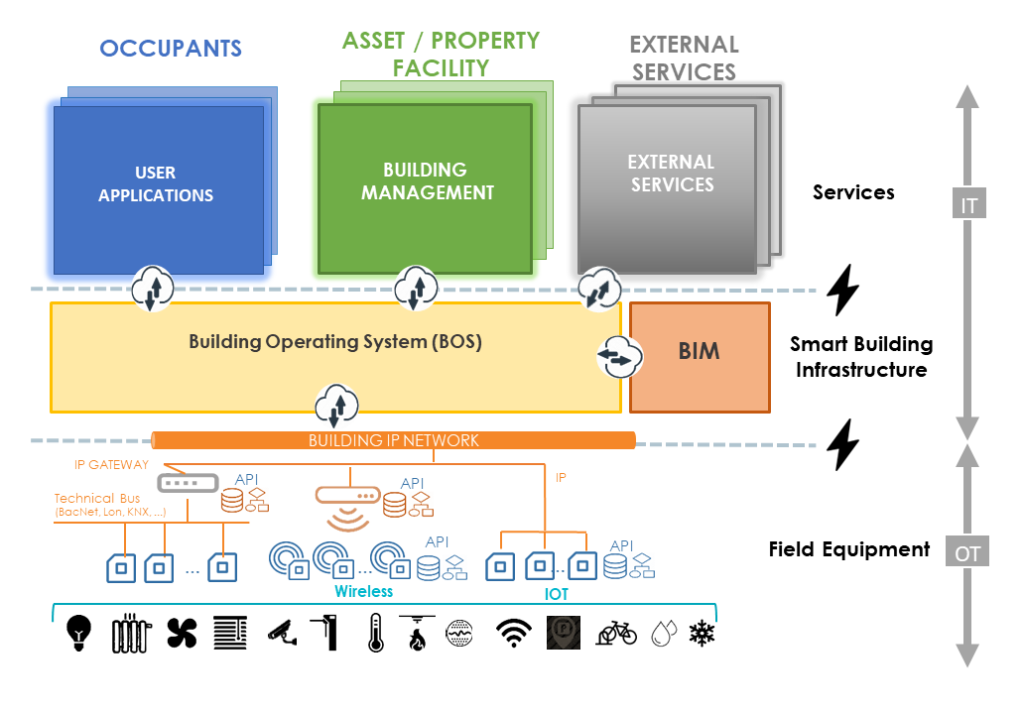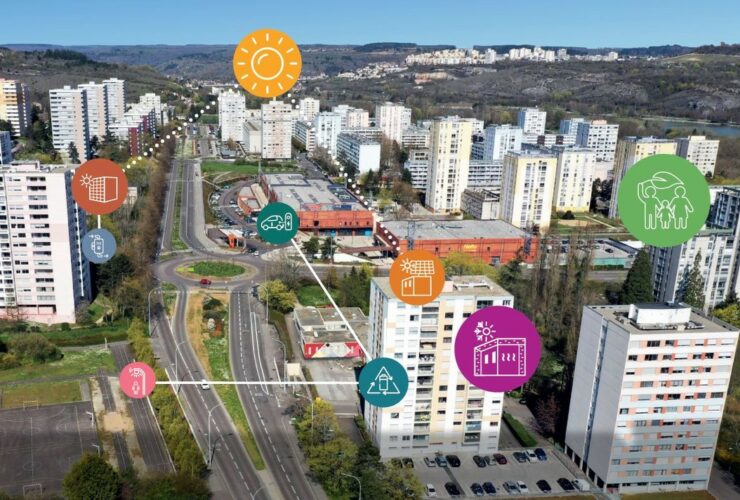Buildings are not just envelopes and spaces, they are also networks and equipment that provide services. What characterizes these systems is that they generate and use data, lots of data – several million per day for an “average” building. But this data, which is the 4th fluid that feeds the building’s services, is little or insufficiently exploited, because it is fragmented in closed-circuit technical silos, with no possibility of exchange with the building’s other functions.
It is very complicated today to cross data from BMS, security, energy management, space management … yet it is by crossing these data that we can create services to meet the new needs of building users. For example, by cross-referencing BMS data with usage data: reservation and occupation of spaces to control the building’s comfort as accurately as possible while optimizing energy consumption. Or adjusting the resources and operation of the building according to external signals, such as those of an energy network operator seeking to smooth out peaks, or those of a mobility operator seeking to reserve resources (parking space, recharging station, etc.).
In short, without the ability to manage data of any kind and to promote its reuse by service applications, the building lacks flexibility and it is very difficult in these conditions to develop new services without revising the equipment infrastructure for each new service. The BOS makes up for these shortcomings; it is the central tool for federating all the building’s data by qualifying, controlling, contextualizing, organizing, protecting and making them available for re-use by the services layer.
The BOS is therefore the central organ of the building data, the control tower without which we cannot have a global vision of the state and uses of the building. It is the missing link in the building information system (BIS) that will allow the various technical functions: Operational Technologies (OT or technical field systems: BMS, security, metering, etc.) to exchange information and above all to exchange with the layer of application services: IWMS (CMMS, Asset Management, etc.), Workplace Management, etc. (from Information Technologies – IT) – it is therefore the element that links these two universes for the benefit of the building users. In its function as a great orchestrator of the building data, the BOS is the warrant of the continuity of services between the design and construction phase and the building operation phase. It allows the various stakeholders of the building: owners – managers – operators – occupants, to access the information they need.
Finally, with its data contextualization and spatialization function, the BOS enriches the building’s data and creates value, usage value, which will undoubtedly translate into economic and financial value, because if there is one trend to be retained from recent developments, particularly in the field of commercial real estate, it is that usage is becoming a strategic variable in the attractiveness of the building and therefore in the value of real estate assets.
The good news is that BOS is a reality today and the first buildings equipped with a BOS are now up and running. The BOS is really bringing the building into the era of digitalization , it is key to smart building allowing extensive exploitation of the building data, enabling variety of usage, and development of new services.


